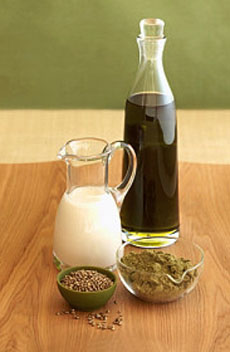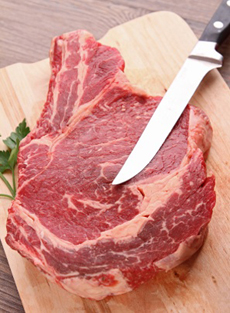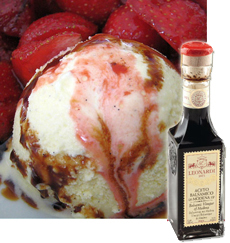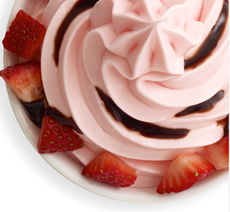|
Our tip of the day is to try some hemp foods. June 4-10 marks the third annual Hemp History Week, an event that aims to generate awareness of hemp as a healthful and sustainable food crop for both America’s families and farmers (while American farmers often net less than $50 per acre for soy and corn crops, Canadian farmers just across the border net an average of $200-$400 per acre for hemp).
Hemp has been grown commercially in the U.S. since the first European settlers arrived in early 1600s. Thomas Jefferson grew it; the Declaration of Independence was drafted on hemp paper; and until the mid-20th century, hemp was a valued food crop.
Chef Johnny Gnall recently tried a variety of hemp foods. His report follows. You can email Chef Johnny. directly at with questions and suggestions.
Hemp foods, long available in health food stores, have been slowly creeping into the mainstream. The biggest problem is government, which classifies all three hemp plant species in the genus Cannabis with the variety that produces marijuana; and many consumers think the same.
|
|

Hemp seeds produce milk, oil, flour and much more—including hemp variations of our favorite foods. Photo courtesy HempHistory Week.com. |
Of the three species of Cannabis, one has long been used for hemp fiber; one for hemp seed and hemp oil, which are made into a broad variety of food products; and the third for the recreational drug. The federal government has declared it illegal to grow any Cannabis variety (some states have recently allowed medical marijuana to be grown).
But fiber and food hemp have no drug value. Food hemp is harvested for the seeds, which contain little to no measurable amounts of tetrahydrocannabinol (THC), the primary psychoactive ingredient in drug forms of Cannabis. Eating hemp-based foods will not cause a false positive drug test. But it will supply outstanding nutrition.
WE’RE HAPPY WITH HEMP FOODS
If you’re looking for an easy way to pile on nutrition, start eating more hemp foods. Before you assume that this advice comes from some sandal-clad liberal living in a commune (not!), consider the facts:
Hemp is an excellent source of omega-3 and omega-6 fatty acids (as well as super omega-3 and super omega-6).
It’s rich in unsaturated fat (that’s the good kind of fat—more on good and bad fats).
Hemp is also rich in pure, digestible protein, and is a heart-healthy superfood.
It has a good balance of all eight essential amino acids, plus three times the vitamin E and twice the iron and magnesium of flax seed.
This makes a pretty compelling case for all of us to start eating more hemp-based foods. Step into a natural foods store and you’ll find hemp is made into culinary oil, hempmilk (a nondairy milk that is more digestible than soymilk), ice cream and snack bars; bagels, burgers, oatmeal, pasta and taco shells. The shelled seeds—called hemp hearts—are added to cereals, dressing, desserts, omelets, salads, smoothies, soups and yogurts for added nutrition, and are toasted as snacks.
|

Hemp hearts, which are shelled hemp seeds.
Photo courtesy Healing-Source.com. |
|
As good as it is for you, hemp is not the most accessible and well-known of foods. Most consumers and cooks are unfamiliar with it and few mainstream grocery stores carry it.
I recently tried a number of hemp products available in my local natural foods store, and found them to be easy to use as substitutions and additions in various recipes.
Moreover, the fact that most hemp products are gluten- and dairy-free makes them a great go-to ingredient for those with food allergies or other dietary restrictions.
Hemp seeds typically add a subtle nutty flavor to foods, pleasant and in no way overpowering—almost like a hint of peanut butter.
|
|
There are four hemp products that I found to be particularly versatile and tasty. The brands are trusted ones, but it’s the foods themselves to which I‘d like to draw attention.
Use these suggestions as a starting point, but realize their versatility and think outside the box. What foods can you think of that could use an upping of protein and good fats? You’re only limited by your own imagination…and you’ll be healthier for it.
Hemp Milk (“Tempt” from Living Harvest): I used it to make polenta, and it was excellent. The nuttiness was welcome, providing a creaminess despite the lack of dairy. The hemp milk behaved in the same way dairy milk would. There’s no reason you can’t substitute it wherever you might use cow’s milk.
Cold-Pressed Hemp Oil (Nutiva brand): Don’t use hemp oil to sautée or fry; do use it in bread dippers, on salads and in other dressings, and anywhere you might drizzle olive oil. I actually used it (along with the hemp milk) to make a couple of batches of cornbread, and the subtle nuttiness worked extremely well. Baking is probably the only way you should cook with hemp oil; it generally shines best when raw.
Raw, Shelled, Hempseeds (Hemp Hearts from Manitoba Harvest): You can pretty much eat these little guys plain and by the handful. Their light, fluffy texture and that same nutty flavor are actually quite pleasant. You can also mix them into just about anything, including batters and doughs, cereals, grains and pastas. I found them to be particularly tasty in quinoa, where its flavor and texture were right at home.
Hemp Oatmeal (Nature’s Path brand): This is essentially oatmeal with hemp seeds mixed in, a tasty and convenient product in individual packets. Try it with a tablespoon of maple syrup and handful of raisins, or with a few ounces of hot milk (or hot hemp milk) stirred in. Or mix the entire packet into another cereal, homemade granola, trail mix or even a muffin batter. It’s a tasty way to get some essential nutrition.
Join natural products advocates, retail stores, health and wellness practitioners and citizens across the country in celebrating hemp. Check out Hemp History Week.
More about hemp.
|
|






